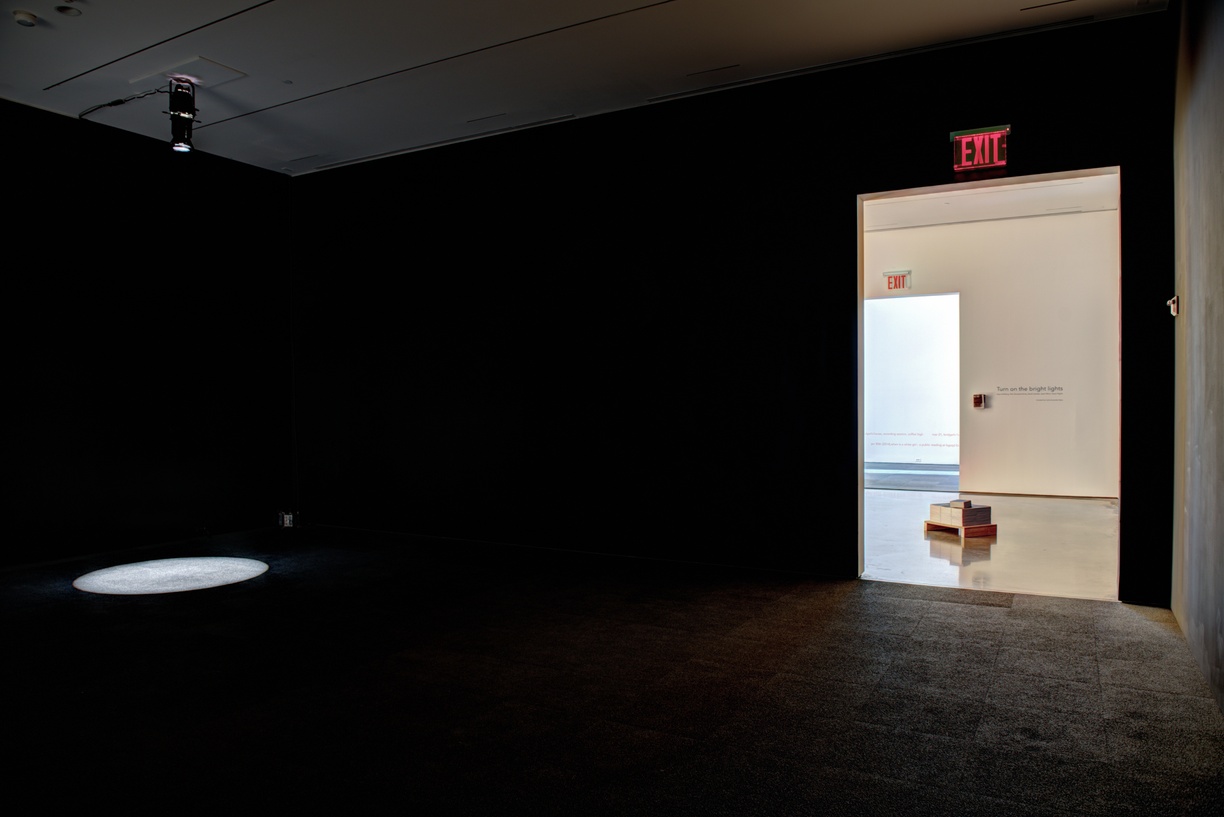
Artists: Kajsa Dahlberg, Felix Gonzalez-Torres, David Lamelas, Jason Mena, Trevor Paglen Depending on how bright it is, a light in the dark can either help us see or completely blind us. And if darkness is conventionally understood to obscure vision, it also makes manifest spaces that cannot otherwise be represented. Drawing on these contradictions in the intricacies of seeing and not seeing, Turn on the bright lights examines how artists use abstraction as a conceptual device to materialize that which remains elusive, indeterminate, and invisible. The exhibition has two parts, emphasizing first an embodied experience of forms, where sculpture, photography, video, and painting speak to the complexities of seeing counter-spaces. It then leads to an increasingly dematerialized environment in which the perceptual limits of meaning are themselves rendered opaque, difficult, and abstract.
Abstraction in the visual arts has often been understood through the lens of the historical avant-garde and high modernism, whose utopian ideals of universality and humanism were intertwined with the totalizing ambitions of the social and political projects of Western modernity. By contrast, the artists in this exhibition deploy abstractions—such as indeterminate geographies, image negation, and the monochrome—as a formal strategy for advancing a nuanced understanding of power relations, a strategy of localized resistance.
Propositions for an Abstract Region
Abstract regions are complex spatializations that are socially and politically produced.
Abstract regions are everywhere. They operate as spaces of resistance, catalyzing collective possibilities, but also construct their own oppressive power structures.
Geographies are irreducible to cartographic representations.
Depending on our subjective position, we see what we are allowed to see.
The boundary line has extended. The fault line has collapsed.
The invisible has arisen as a cautionary tale. The visible obstructs our vision. We are only left with traces of the real.
The politics of visibility operate everywhere, everyday, on everyone.
Our senses have been compromised.



